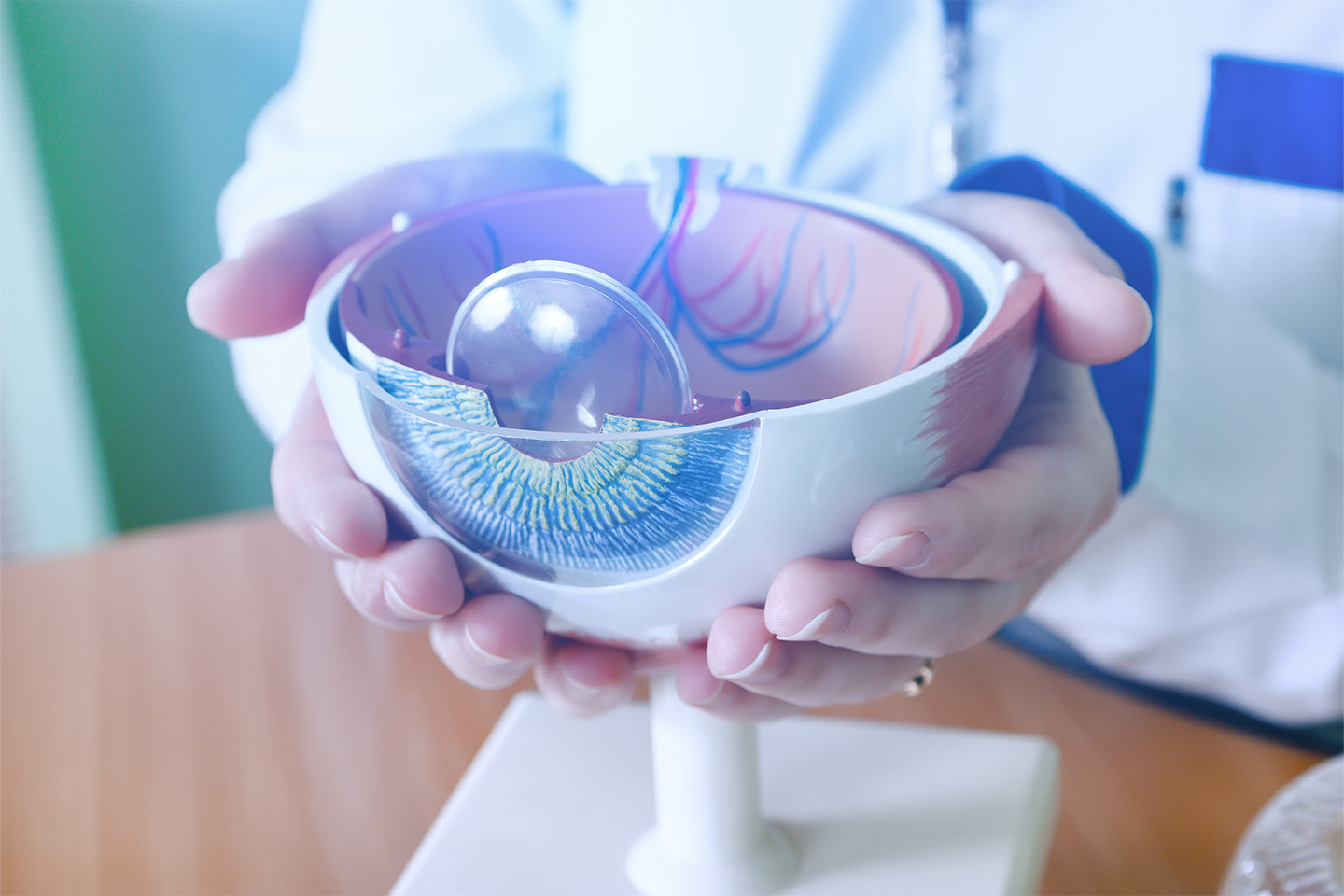A Patient’s Guide to Glaucoma

Glaucoma is the leading preventable cause of blindness in the U.S., but there are ways to ensure it doesn’t progress and result in significant vision loss.
As our bodies age, so do our eyes. Getting older can put you at risk for a number of eye diseases, and one of the most common is glaucoma — the leading preventable cause of blindness in America. Though many people are at risk, there are ways of treating and managing glaucoma, especially if you detect it early. Here’s what you need to know.
Symptoms of Glaucoma
Glaucoma is a progressive eye disease that can develop in one or both eyes. It affects the optic nerve, which helps our brains communicate with our eyes. The optic nerve is most commonly damaged due to high pressure, although there are types of glaucoma that can occur without increased eye pressure.
There’s no one pressure level that will categorically result in glaucoma, as everyone’s eyes react differently to varying degrees of pressure. However, if the eye’s ability to drain fluid is damaged, that’s when glaucoma-related problems arise.
When the condition is just beginning, there are often no symptoms at all; in fact, roughly two million people in America don’t know they have glaucoma. Glaucoma can worsen over time as eye pressure increases, and as this happens, symptoms may begin to appear. These include aching, an inability to see well at night, peripheral vision loss, and the presence of glares or halos in the field of vision.
Diagnosing Glaucoma
Due to the asymptomatic nature of early glaucoma, it’s important to get your eyes checked regularly, especially if you’re over the age of 40.
To diagnose glaucoma, an eye doctor first applies numbing drops to the eyes and checks their pressure using something called a tonometer. Visual acuity is tested using a standard eye chart, and your eyes are also examined after being dilated. The doctor will then evaluate the field of vision, as well as the shape and color of the optic nerve and the eye’s layer of nerve fiber.
Who is at Risk?
People over the age of 60 are at an increased risk of developing glaucoma. Other demographics that more likely to develop the condition are Mexican Americans, African Americans over the age of 40, people with diabetes, people taking steroid medications, severely nearsighted people, and those with a family history of glaucoma.
Treating Glaucoma
While there is currently no cure for glaucoma, there are effective ways of treating the symptoms and preventing the disease from progressing. Prescription eye drops are a popular choice and should be applied regularly to help control eye pressure. If those aren’t sufficient, oral medication can be prescribed in addition to the drops.
Those who need a more advanced treatment have several surgical options. Laser surgery can help to drain excess fluid from the eyes as needed, and conventional surgery creates a new opening for fluid to drain. One of the latest treatment options is the iStent Trabecular Micro-Bypass, a surgical therapy that’s placed in the eye to improve both eye pressure levels and aqueous outflow. It’s the smallest medical device to ever be approved by the FDA.
It’s important not to delay treating glaucoma, as doing so could lead to irreversible vision loss. The eye care specialists at the Kleiman Evangelista Eye Centers have experience in diagnosing and treating glaucoma and other eye diseases and will work with you to develop a treatment plan that’s right for you. Schedule a VIP consultation with us today, either online or by calling (800) 714-2020.
Turn To The Top Eye Doctors In Texas
Check out one of our locations below for the best eye care near you:









